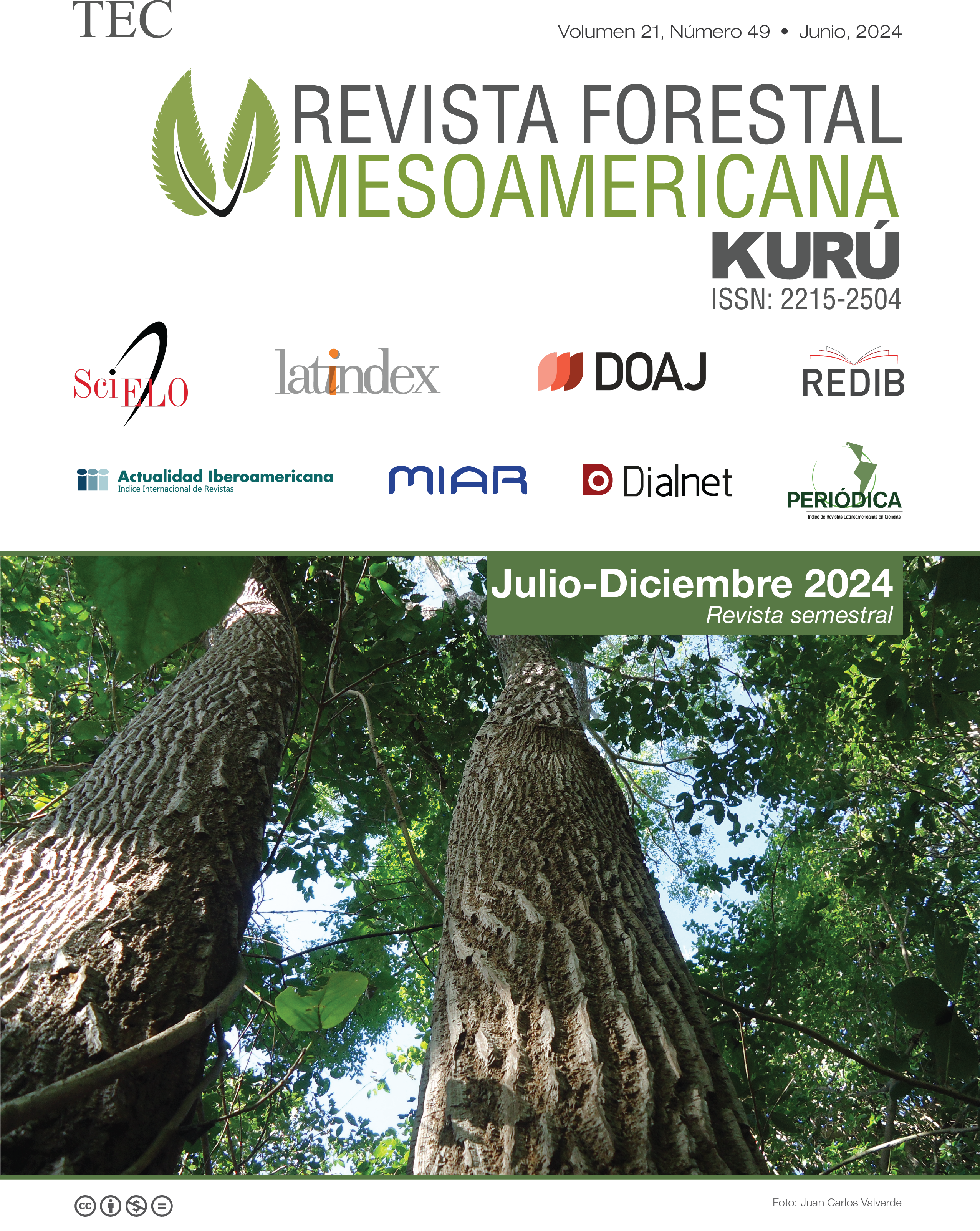Structural characterization and floristic diversity of a Pinus - Quercus forest in the Sierra Madre del Sur, Mexico
Main Article Content
Abstract
Pinus-Quercus forests are important plant communities that provide environmental services. The objective of this study was to characterize the structure and to describe the floristic diversity of a Pinus-Quercus forest in the Sierra Madre del Sur. Abundance, dominance, frequency and importance value index (IVI) were determined for each species. Species richness was evaluated using the Margalef index, while species diversity was calculated using the Shannon index and true diversity of order 1 (1D). A and diametric classification was also completed. A total of 237 individuals per hectare was observed, belonging to 8 species that were included in three genera and three families. Fagaceae was the most represented family with five species. The specific richness was 1,28, the Shannon index was 1 ,43 and the true diversity index of order 1 was 4,18. Quercus and Pinus were the most abundant genera with 44,6% and 52,8% respectively, accounting together for 97,4% of the relative abundance. Pinus oocarpa was the species with the highest importance value index, reaching 39,27%. According to the diametric classification, most individuals were grouped in the lower classes (10-20 cm) indicating an active regeneration state of the plant community.
Article Details

This work is licensed under a Creative Commons Attribution-NonCommercial-NoDerivatives 4.0 International License.
Revista Forestal Mesoamericana Kurú is licensed under CC BY-NC-ND 4.0
Al enviar un artículo a la Revista Forestal Mesoamericana kurú (RFMK), los autores ceden los derechos patrimoniales a la editorial de la RFMK una vez su manuscrito haya sido aprobado para publicación, autorizando a la RFMK a editarlo, reproducirlo, distribuirlo, y publicarlo en formato físico y/o electrónico. La titularidad de los derechos morales sobre los trabajos objeto de esta cesión seguirá perteneciendo a los autores.

